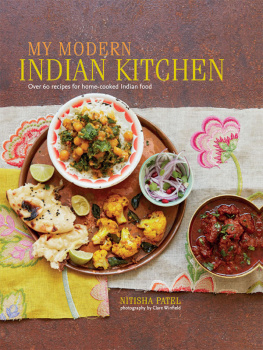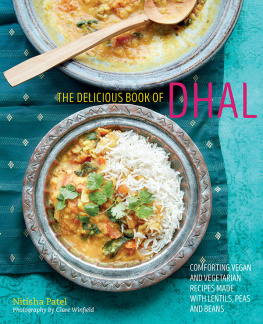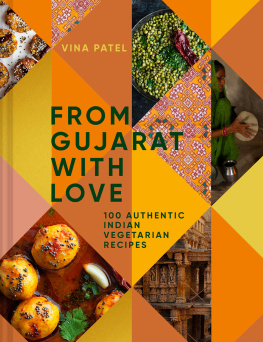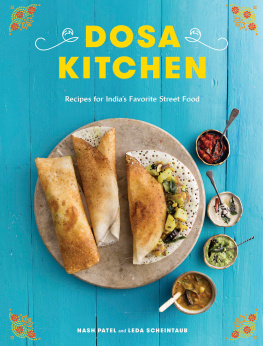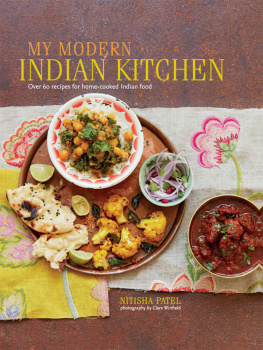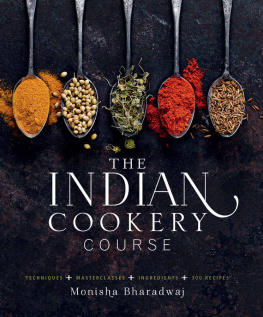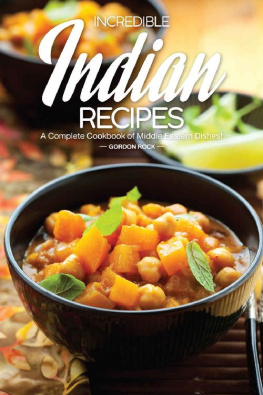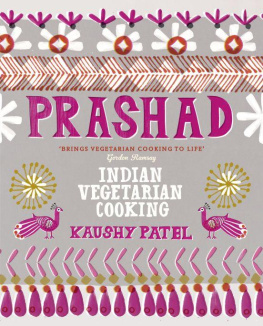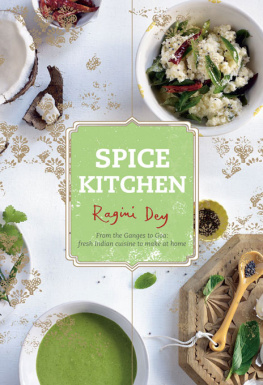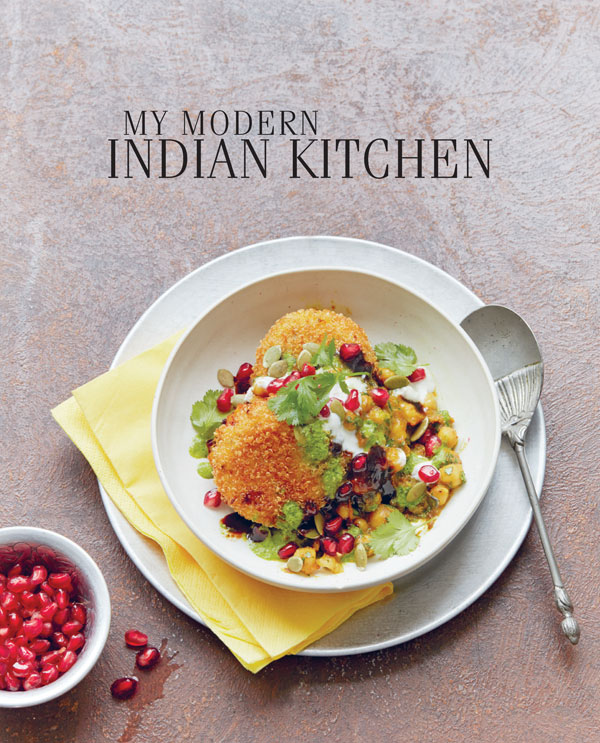

MY MODERN
INDIAN KITCHEN
Over 60 recipes for home-cooked Indian food
NITISHA PATEL
photography by Clare Winfield

For the three most empowering women
I have ever and will ever meet
My grandmother, who showed me the magic of cooking.
My mother, who showed me the way with her cooking skills.
My sister, whose love, support and selflessness know no bounds.
This book is for you three.
Senior designer Megan Smith
Commissioning editor Stephanie Milner
Copy editor Kate Eddison
Production David Hearn
Art director Leslie Harrington
Editorial director Julia Charles
Publisher Cindy Richards
Food stylist Emily Kydd
Prop stylist Jennifer Kay
Indexer Hilary Bird
First published in 2017 by Ryland Peters & Small
2021 Jockeys Fields, London WC1R 4BW and 341 E 116th St, New York NY 10029
www.rylandpeters.com
10 9 8 7 6 5 4 3 2 1
Text copyright Nitisha Patel 2017
Design and photographs copyright Ryland Peters & Small 2017
eISBN: 978-1-78879-003-1
ISBN: 978-1-84975-814-7
The authors moral rights have been asserted. All rights reserved. No part of this publication may be reproduced, stored in a retrieval system or transmitted in any form or by any means, electronic, mechanical, photocopying or otherwise, without the prior permission of the publisher.
A CIP record for this book is available from the British Library. US Library of Congress Cataloging-in-Publication Data has been applied for.
Notes
Both British (Metric) and American (Imperial plus US cups) measurements are included in these recipes for your convenience, however it is important to work with one set of measurements and not alternate between the two within a recipe.
All spoon measurements are level unless otherwise specified.
Ovens should be preheated to the specified temperatures. We recommend using an oven thermometer. If using a fan-assisted oven, adjust temperatures according to the manufacturers instructions.
All eggs are medium (UK) or large (US), unless specified as large, in which case US extra-large should be used. Uncooked or partially cooked eggs should not be served to the very old, frail, young children, pregnant women or those with compromised immune systems.
When a recipe calls for the grated zest of citrus fruit, buy unwaxed fruit and wash well before using. If you can only find treated fruit, scrub well in warm soapy water before using.
To sterilize preserving jars, wash them in hot, soapy water and rinse in boiling water. Place in a large saucepan and cover with hot water. With the saucepan lid on, bring the water to a boil and continue boiling for 15 minutes. Turn off the heat and leave the jars in the hot water until just before they are to be filled. Invert the jars onto a clean dish towel to dry. Sterilize the lids for 5 minutes, by boiling or according to the manufacturers instructions. Jars should be filled and sealed while they are still hot.
CONTENTS
Magical spice powders, sizzling funny-shaped dried spices, noisy popping saucepans, aromatic smells, colourful foods this is what sums up my childhood: great home-cooked Indian food!
I was born and raised in Wolverhampton in the West Midlands. My parents are from the state of Gujarat located in the west of India, just off the Gulf of Khambhat. During the mid-nineties, my parents, before they had even met, had both lived and spent time in South Africa. At this time, for a better quality of life, thousands of families migrated from Gujarat to eastern and southern Africa. At the time, Africa was seen as the land of opportunity and an easy way to make money fast. Today, it is quite evident to see the influence that Africa has had on modern Gujarati cuisine.
From Africa, both my maternal and paternal grandparents moved to the UK and settled in Wolverhampton. In 1980, my parents met, got married and had three children; my older sister, myself and my younger brother. Growing up as part of a big fat Gujarati family was an eccentric and interesting experience to say the least, but a magical one.
With a large family on both sides, there was always a family event to attend every weekend. Whether it was Diwali, Christmas, New Year, a birthday, an engagement, a wedding or just a family get-together, the family have always made an effort to meet up and enjoy each others company. With regular Gujarati gettogethers, comes regular, large doses of different delicious delights; explosive home-cooked curries, tasty Tandoori chicken, crispy deep-fried bhajis, hand-crafted samosas, aromatic biriyanis and so much more To me, a family party has always meant one thing: good food I suppose thats where my love for food comes from. I always associate good food with family, happiness and having a good time.
From a young age, I have always been interested in food. When in the company of visitors, my parents often tell a funny story about how if I was playing-up as a child they would keep me occupied by giving me a large bag of peas to pod in return for a treat. Whether it was watching my mother cook her famous lamb curry on Sundays, helping her to make her special spice blends or watching my favourite chef idols on TV, I was fascinated by the magic of cooking. Curiosity took over and I started to cook new and exciting dishes at home in my mothers kitchen.
After finishing high school, I went to the well-established College of Food at University College Birmingham to study Culinary Arts Management. From day one, I was hooked! The course lecturers were addictively charismatic and passionate about gastronomy. The courses themselves were very in-depth sessions about the hospitality industry. I had seen professional kitchens on TV but never before had I been or worked in such a well facilitated environment. Going to university to study was an absolute dream come true, even if it did mean that I wouldnt become the politician, lawyer, doctor or accountant my family thought I would be!
After four years of exams, assignments, practicals, studying and writing a dissertation, I couldnt wait to get into the big wide hospitality world and put my culinary skills to use. I had been a student long enough and I wanted some practical experience. Food and cooking had now become a huge part of my everyday life and I was hungry to learn more about different cuisines of the world.
Following two years in the industry, I became a development chef for a global corporate company. The job involved tremendous amounts of research and development, and also engineering convenience products that were commercially and nutritionally viable. I was familiar with working to a budget before, but controlling the amount of calories, saturated fat, protein, salt and vitamins that were going into a product, while also making it taste beautiful, was a great challenge. The research and innovation aspect of the role involved many inspirational food trawls where I ate at some of Londons greatest foodie places; from the finest Michelin-starred Indian restaurants to the very best street-food stalls.

